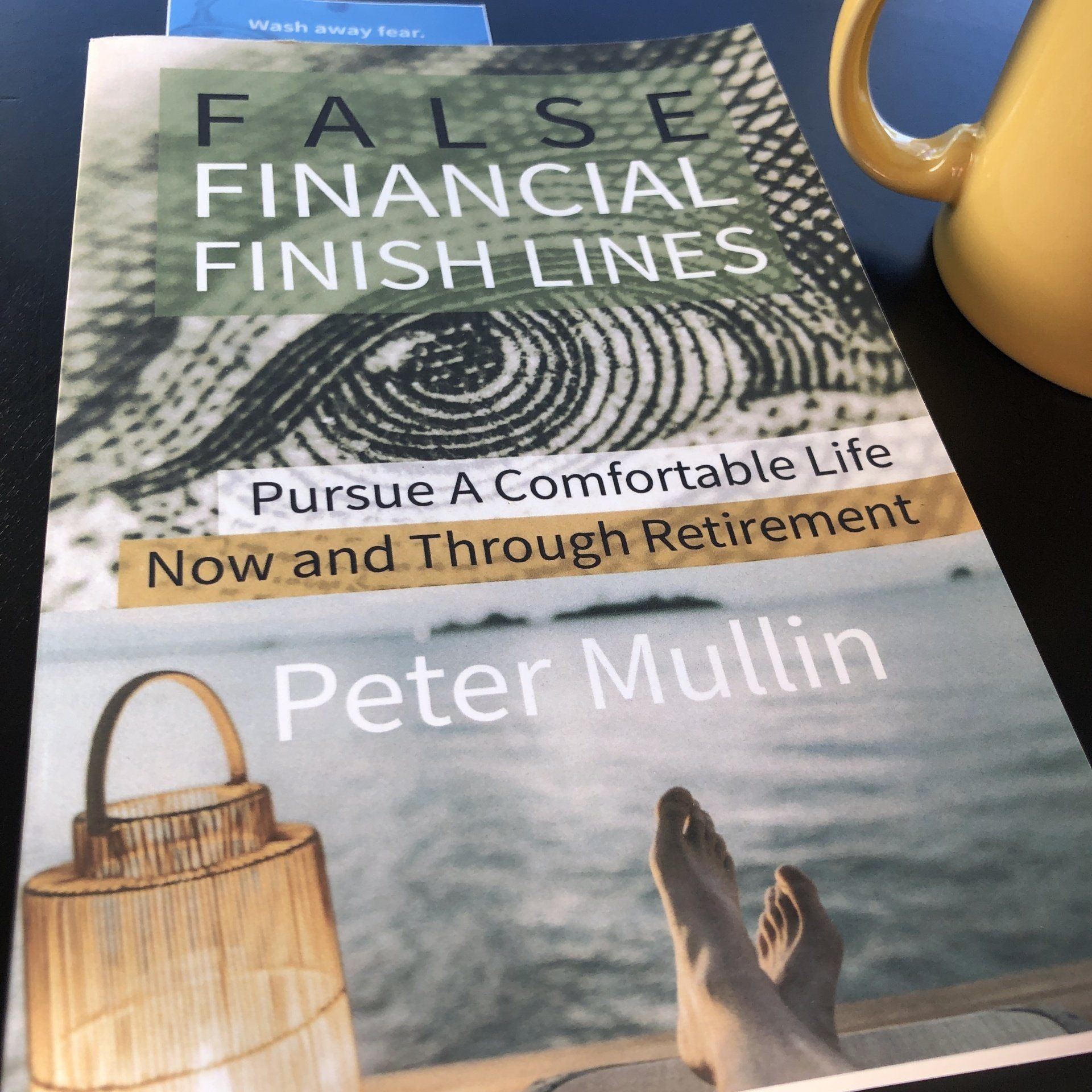An Attractive Entry Point
Client Letter, April 28, 2022

PETER MULLIN, AAMS®
Mullin Wealth Management
April 28, 2022
Dear Valued Investor,
It has been a turbulent 2022 so far for investors. The S&P 500 Index is on track for its worst April in more than 40 years, the Nasdaq entered a bear market on April 26 with its more than 20% decline, and bonds, which typically provide ballast for diversified portfolios during periods of stock market volatility, have not protected.
Markets face a number of threats. The COVID-19 pandemic has contributed to a disappointing start to the year for the U.S. economy as evidenced by the -1.4% growth in gross domestic product (GDP) reported on April 28. COVID-19 continues to disrupt global supply chains amid intermittent lockdowns in some of China’s largest cities. Russia’s devastating assault on Ukraine, arguably the biggest geopolitical threat in Europe since WWII, has added to the worst inflation problem in the U.S. since the 1970s. The bond market is pricing in nine more Federal Reserve (Fed) rate hikes, after looking for only three when the year began. That’s a lot for investors to digest.
But during a market correction it’s easy to forget that this volatility is actually quite normal.
- The S&P 500 Index has fallen 13% peak to trough this year, below the 14% average of all years.
- During midterm election years, the average stock market correction is 17%, but stocks rebounded 32% on average in the 12 months following those midterm year lows.
- Of the last 21 times the S&P 500 has been down double-digits since 1980, stocks rallied back to end the year positive 12 times.
- During those 12 positive years, the average gain has been a stellar 17%.
We will admit a double-digit gain in 2022 is unlikely, but a U.S. consumer willing and able to spend, which makes recession unlikely in the near term, and steadily rising corporate profits still make a positive year for stocks in 2022 more likely than not, in our view.
Inflation remains a big concern, but a number of factors could put downward pressure on prices beginning this summer. On the supply side, where most of the problem lies, supply chain normalization and more job-seekers coming off the sidelines could help ease pressure on goods prices and wages. An eventual cease-fire in Ukraine could remove some of the upward pressure on commodity prices. On the demand side, higher interest rates can help cool housing. The bond market is already doing some of the Fed’s work with the 10-year Treasury yield nearly doubling in four months to 2.8%. These factors could easily cut headline consumer inflation in half by year-end from the current annual pace of 8.5%.
The outlook for corporate profits remains quite positive and may help prevent stocks from pulling back much further. With about 180 S&P 500 companies having reported, double-digit earnings growth appears within reach while analysts’ estimates for 2022 have continued to rise. These numbers are excellent considering slow economic growth, supply chain disruptions, and inflationary pressures.
The investing climate is quite challenging, but history suggests patience will be rewarded. Even if there may be some downside in the short term, consumer and business fundamentals remain supportive. Strong profits and lower stock prices mean more attractive valuations. Our belief is that current levels will end up being an attractive entry point.
Please contact me if you have any questions.
Sincerely,
Peter Mullin
Important Information
This material is for general information only and is not intended to provide specific advice or recommendations for any individual. There is no assurance that the views or strategies discussed are suitable for all investors or will yield positive outcomes. Investing involves risks including possible loss of principal. Any economic forecasts set forth may not develop as predicted and are subject to change.
References to markets, asset classes, and sectors are generally regarding the corresponding market index. Indexes are unmanaged statistical composites and cannot be invested into directly. Index performance is not indicative of the performance of any investment and do not reflect fees, expenses, or sales charges. All performance referenced is historical and is no guarantee of future results.
All data is provided as of April 28, 2022.
Any company names noted herein are for educational purposes only and not an indication of trading intent or a solicitation of their products or services. LPL Financial doesn’t provide research on individual equities.
All index data from FactSet.
This Research material was prepared by LPL Financial, LLC. All information is believed to be from reliable sources; however LPL Financial makes no representation as to its completeness or accuracy.
- Mullin's take on the "4% Retirement Rule"
- Navigate "Bad Portfolio Weather"
- Tips to Optimize Social Security







Articles and Assets
What are your Priorities?
Well it’s the end of the year. I just searched on Google for “market outlook 2018.” I came up with a little over 58-million “results.”
So should you be investing in stocks in 2018? The quick answer: It’s likely a prudent part of your portfolio. But it depends on your circumstances, right?
It’s apparently popular to throw your hat in the ring.
A mantra that you hear among disciplined professionals is to “stay the course.”
Then you hear “sell high, buy low.”
Who’s right?
The relief of a disciplined strategy is that it can be tailored to you. And tailor we think you should.
Yes, it’s possible that an investor may not utilize stocks in their portfolio at all. Or you may decide to go “all in” with a diversified stock portfolio.
(Side effects from tailoring a strategy may include increased confidence & persistence, apathy toward daily market reports, and increased focus on what really matters.)
Let’s begin with the “Why” of investing for you. Then you can request 15-minutes on the phone discuss your “how.”
So “Why Should You Invest”
Life changes and our “why” of investing ought to transform with life. Some invest for sport – they like the risk/reward of investing – they’re in it for the thrill. I don’t hang with this crowd.
Most of us ought to invest for things we want. Our money & our goals are serious. By investing in a diversified portfolio we can pursue things we want.
1. Living A Comfortable Retirement: Retirement is a noun. It’s up to you to really design and live a retirement that reflects you.
2. Purchasing a Home: Home is a place to live. It can take a down payment.
3. Passing an Inheritance on to Family:
4. Student Loan Shield: This idea is important for many Millennial graduates. Student loans can dominate your budget. But instead of accelerating those payments, what if you paid your required payments, and then invested the additional money that you were going to pay against your loan balance?
5. Emergency Reserves: You probably have read that it’s prudent to keep a relative healthy amount of cash in your checking/savings. Once you’ve achieved that, then you can consider investing additional funds. Go a step further and consider a non-retirement account for you and your house. You can spend this on cars, vacations or use it just as described in #4.
The Dow Jones has seen positive results, so far, in 2017. It’s unusual and sort of uncomfortable as the independent financial advisor. Why is it uncomfortable?
What would sting & linger longer? Finding $20 in the parking lot? Or finding a $20 parking fine on your windshield?
We’ve been finding a lot of metaphorical “$20’s” (i.e. “positive results”) in our portfolios this year. So the second we find a parking fine (or a few in a row) we’ll be sure to ask if stocks are still the right place to park our money.
Complacency can work against us, Dear Clients. Just keep recalling your long-haul strategy and your “why” of investing.
***
Peter Mullin is an independent financial advisor registered through LPL Financial. He lives in Rogers, MN with his family. He was born and raised in St. Cloud, MN. Mullin Wealth Management is located in Waite Park, MN.
The opinions voiced in this material are for general information only and are not intended to provide specific advice or recommendations for any individual.
Investing involves risk including loss of principal.
There is no guarantee that a diversified portfolio will enhance overall returns or outperform a non-diversified portfolio. Diversification does not protect against market risk.
All performance referenced is historical and is no guarantee of future results.
All indices are unmanaged and may not be invested into directly. No strategy assures success or protects against loss.







